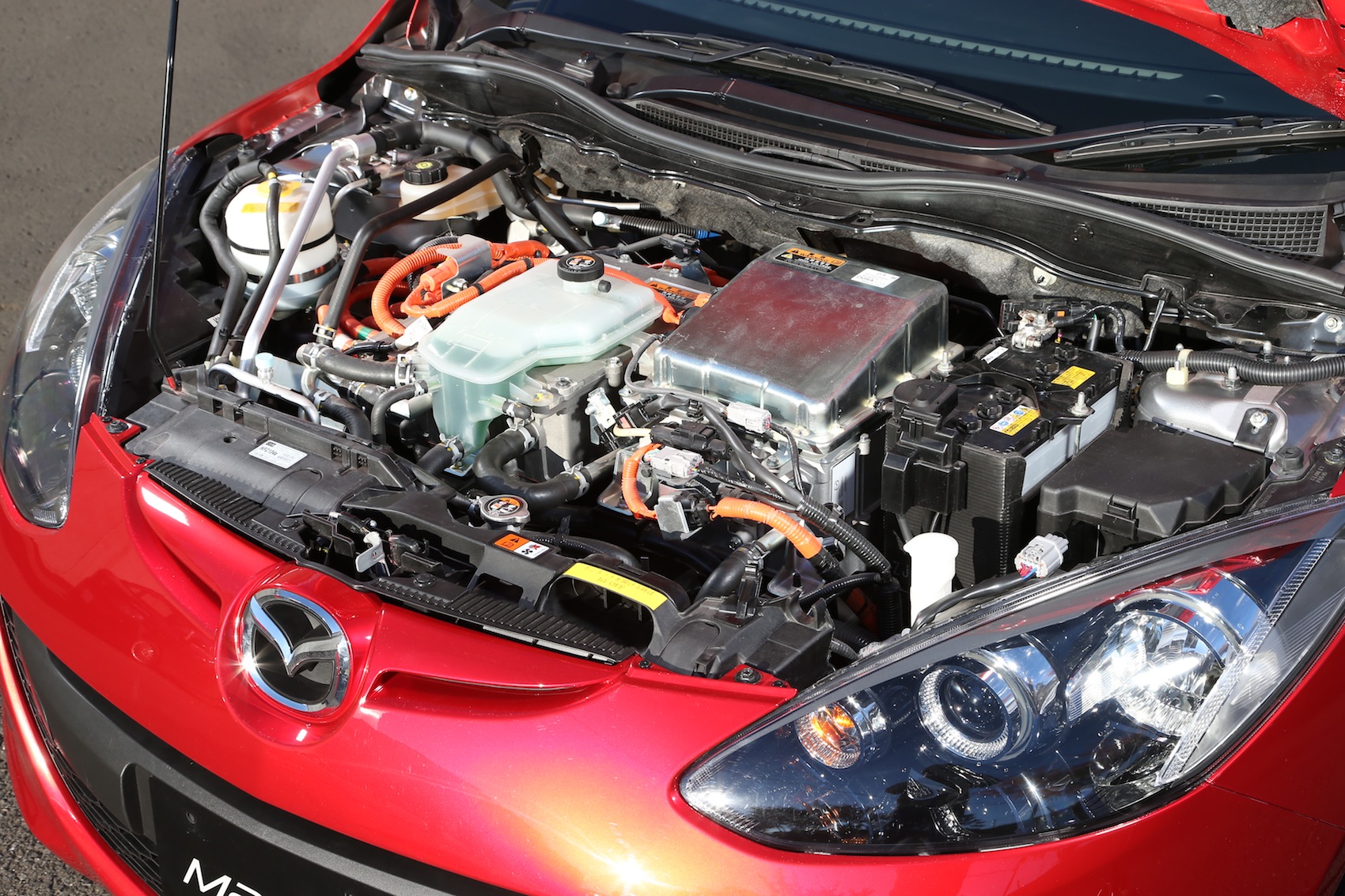

The car will also sound its horn when you're filling the tires and the desired pressure has been reached. In addition to the new 7.2 kilowatt-hour charging system, which comes standard on the Premier and is an option on the LT model, Chevy has added more tech to the Volt with things like adaptive cruise control, an updated pedestrian alert system and a digital rear-view camera. The Chevy Volt’s innovative engineering and second-generation advances make its impact on the industry at large undeniable and its encore appearance on the Wards 10 Best Engines list richly deserved.The 2019 Chevrolet Volt gets a bunch of upgrades to help it keep up with newer EVs. One of the most significant improvements is the propulsion system’s ability to use both motors in EV or range-extended mode at the same time, which substantially improves launch and low-end acceleration, contributing greatly to the fun factor. (14 kg) lighter and 20% more energy-dense with 10% more power. The battery pack also was redesigned, making it 30 lbs. And, unlike the Gen I, it burns regular gasoline. the previous 1.4L, and it features a high 12.5:1 compression ratio and cooled exhaust-gas recirculation.

The second-generation 1.5L engine boasts 20% more power and 10% more torque vs. That means you can drive up to 420 miles (676 km) without stopping for gas or charging up. EPA combined economy in range-extending mode is up from 37 mpg (6.4 L/100 km) to 42 mpg (5.6 L/100 km).

Official EV-only range is 53 miles (85 km), 40% more than the previous 38 miles (61 km). The last factor may not impress car shoppers, but the ability of GM to share most of the Voltec’s key components with the Malibu HEV and other GM electrified powertrains down the road means engineers will be able to continue to reduce costs and improve performance as volumes grow. That’s due in part because the new Voltec system isn’t just an improvement over the original, it’s a major leap in performance, battery range and scalability. The first-generation Volt made it on the 2011 Wards 10 Best Engines list when it debuted, and the second generation makes our list for the second time in a row in 2017. “Silent as a submarine Engine transition (from EV to EREV mode) nearly imperceptible,” adds Editor Dave Zoia. “As a de-Volt-ee, I’m already guzzling the Kool-Aid, but a weekend drive in this second-gen makes me want the new powertrain even more,” Gritzinger says. “Stunning level of quiet and refined power from 0 rpm and ample power across the range, low, passing and highway cruising,” says Editor Bob Gritzinger, whose personal car is a first-generation Volt. (399 Nm) of tire-chirping torque on tap, we just call it fun.
#CHEVY VOLT RANGE EXTENDER ENGINE SERIAL#
General Motors calls it an extended-range electric vehicle because when the Volt’s battery is depleted, the propulsion system operates like a serial hybrid, where the gasoline engine acts as a range extender by generating electricity that powers the car’s drive motors, instead of mechanically turning the wheels with assistance from electric motors like a common parallel hybrid.īut with 294 lb.-ft. There are electric vehicles and plug-in hybrid-electric vehicles, and then there is the Chevy Volt’s Voltec propulsion system, a unique blend that delivers the best of both worlds: the spirited performance and whisper-quiet NVH of a premium EV and the versatility of a PHEV.


 0 kommentar(er)
0 kommentar(er)
